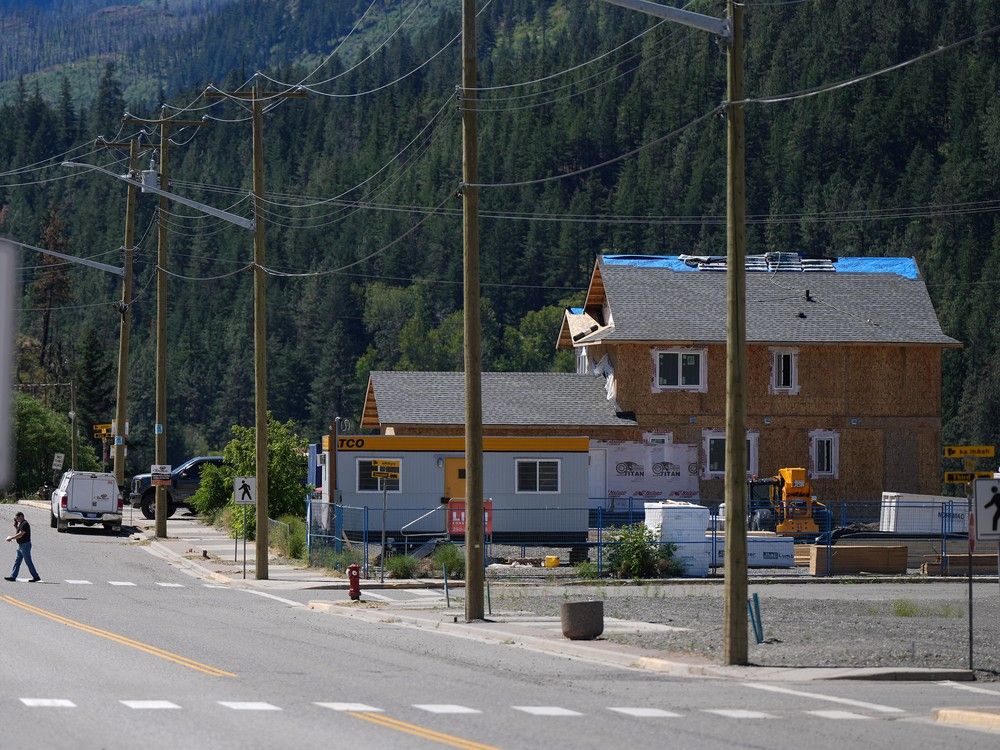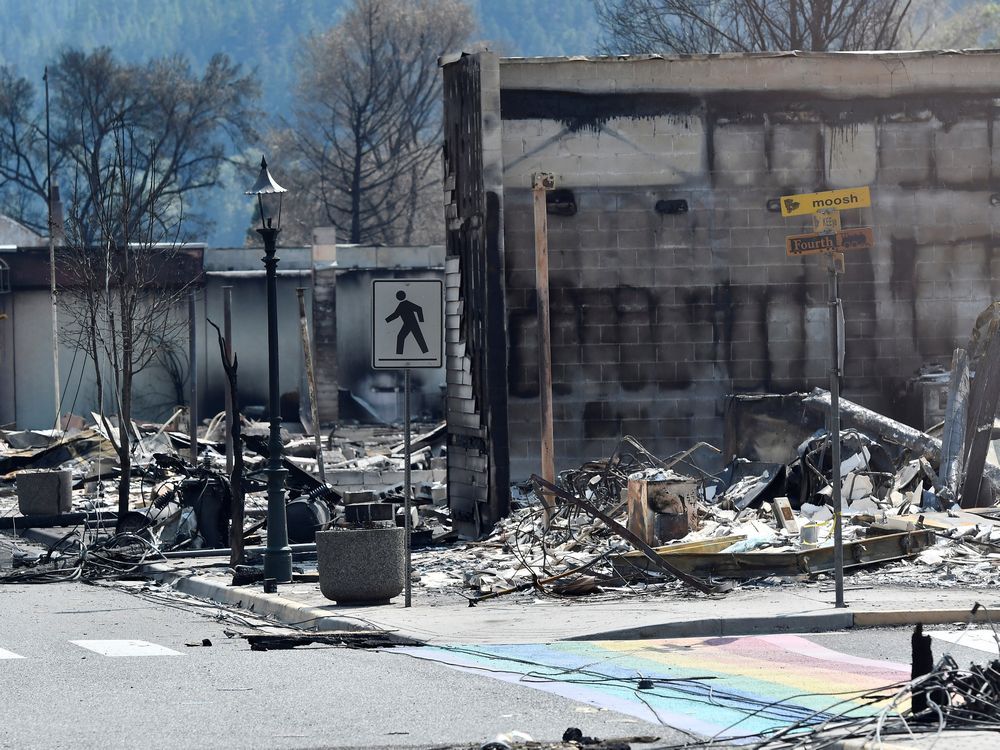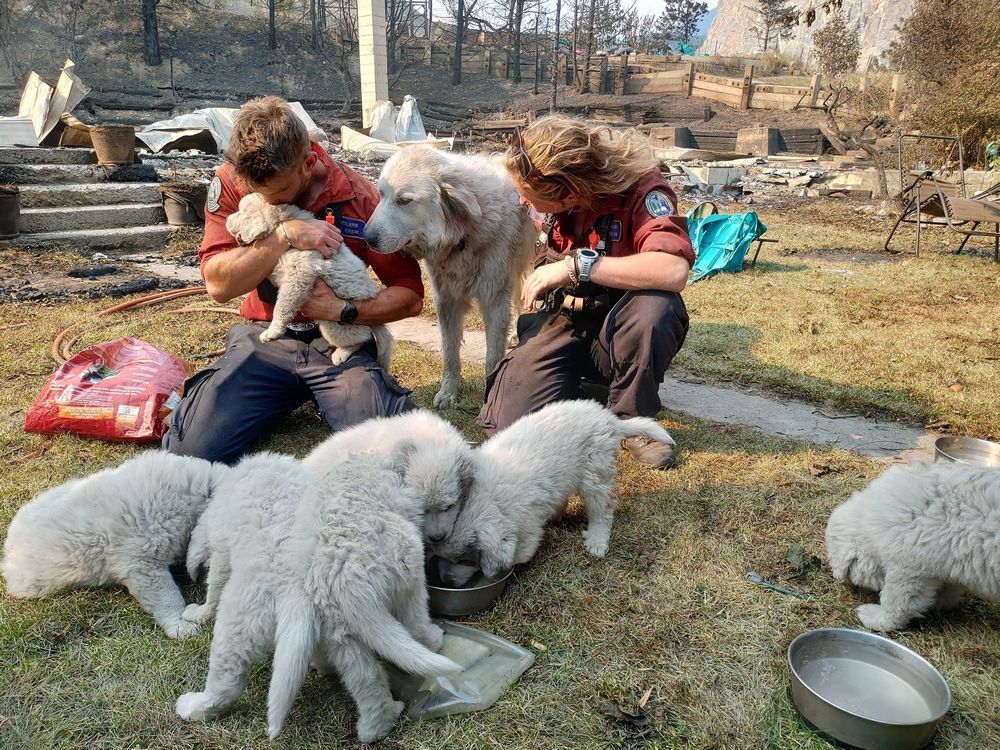
It’s not summer for Tricia Thorpe. It’s fire season.
With two wildfires burning out of control in the area around Lytton on Tuesday afternoon — four years after the town and surrounding properties were devastated by fire — the community is pulling together to face what has become a perennial threat.
“I don’t think people understand what has happened since 2021,” said Thorpe, referring to the year her home and 520 other buildings were destroyed by fire the day before Canada Day. “We’ve had fires every year, and every year it has been traumatizing.”
This year it’s the Nikaia Creek fire — a fire covering the equivalent of about six soccer fields — that began burning on Monday, about two kilometres from downtown Lytton on the western side of the Fraser River. An evacuation order was issued for two properties in the Thompson-Nicola Regional District, while several properties on Lytton First Nation land remained under evacuation alert on Tuesday.
Also on Tuesday, a second smaller fire was discovered north of Lytton along Highway 12. Firefighters were attacking the slow-moving surface fire on Tuesday afternoon, when it was estimated at about one soccer field in size.
B.C. Wildfire Service spokesperson Taylor Stewart-Shantz said the service responded to the larger Nikaia Creek fire Monday night with two initial attack crews and a rappel crew. Working through the night, they were able to lay a hose line around the fire for a “direct attack,” with support from a helicopter making water drops. But with temperatures over 30 C forecast for Tuesday, as well as the possibility of winds, the fire continued to be listed as out of control.
Crews “remain aware of the weather” as they are fighting the fire, said Stewart-Shantz.
Weather was a big factor in 2021, as a heat dome settled over B.C. and the temperature in Lytton soared into the mid-to-high 40s. The Lytton Creek fire, which started to the west of Lytton, leapt across the Fraser River to the village. That chain of events remains on the minds of many who have come back to rebuild, said Thorpe.
“There is a lot of anxiety, mostly because of the date,” she said. “It’s literally the four-year anniversary.”

Since 2021, the region has weathered more fires. In July 2022, the Nohonim Creek fire destroyed six houses on Lytton First Nation land and several buildings on historic Earlscourt Farm, coming within 1.7 kilometres of the village. Due to the spring freshet, the ferry that crosses the Fraser River was closed, complicating efforts to fight the fire.
In August 2023, the Stein Mountain fire led to evacuations on Lytton First Nation land as Canada sustained a record-breaking wildfire year. Last summer, there were more evacuations in the Thompson-Nicola Regional District as the Shetland Creek fire burned out of control near Spences Bridge.
Thorpe said the past several summers have been difficult for many — with no indication this summer will be different.
Thorpe said there was a moment after the 2021 fire when she and her husband talked about whether or not to stay. Support from their community persuaded them to rebuild.
“My husband is the fourth generation here,” she said. “Right after it happened, people were reaching out to offer help and a place to stay. They wanted us to stay and there’s something about having that community that you can’t replace.”
Because her property is in a rural electoral area, Thorpe was able to rebuild much quicker than those in the village, where delays have stretched several years, much of it caused by requirements for archeological assessments. The first dozen or so village residents moved back into rebuilt homes this year.

Thorpe, who has since become the area director for the Thompson-Nicola Regional District, said B.C. needs to put more resources into fire mitigation and response in rural and remote areas, where it can take B.C. Wildfire Service time to mobilize.
“Those first hours can make a big difference,” she said. “We’ve seen small fires grow to be a monster in that time.”
She said the province has made strides in recognizing the role of local community groups in responding to fires that threaten their homes and livelihoods, some of which are active in the Lytton region, but she’d like to see more training, equipment and guidelines for them.
“We’re living it,” she said. “We’re the first boots on the ground … (and) the people impacted most severely.”